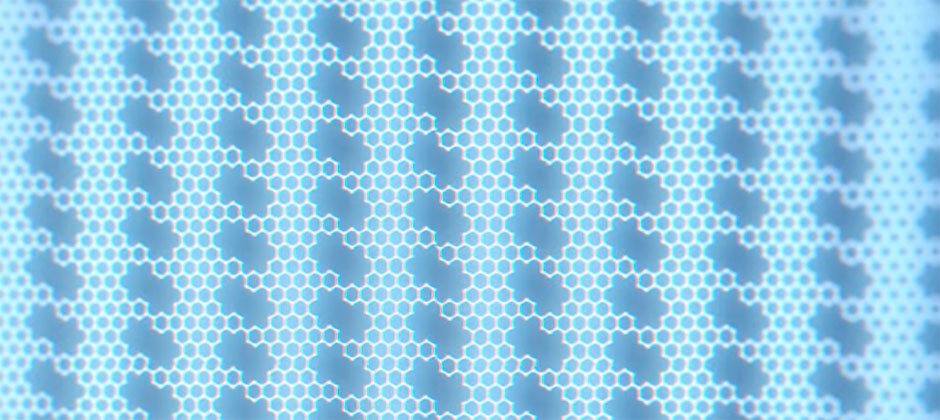Friday, 14 December 2018
Holey graphene membrane voted Molecule of the Year by C&EN journal
Readers of the journal of the American Chemical Society have voted this graphene membrane with pores controlled at the atomic scale as the best molecule of 2018. The material was presented in Science in a joint article by researchers from the ICN2, CiQUS and DIPC.

The porous graphene membrane synthesised by researchers from the Institut Català de Nanociència i Nanotecnologia (ICN2, a centre of BIST and CSIC), the Centro Singular de Investigación en Química Biolóxica e Materiais Moleculares (CiQUS) and the Donostia International Physics Center (DIPC) has been voted molecule of the year by readers of the American Chemical Society's C&EN magazine with 58% of the votes among 8 international candidates.
Science magazine published this milestone in April in a work directed by the ICN2 group leader ICREA Prof. Aitor Mugarza and CiQUS IP Dr. Diego Peña. The article explained the potential of this precious material for applications in electronics, filters and sensors. The results of this study, whose first author is Dr. César Moreno from the ICN2, conducted with the molecule synthesized at CiQUS by Dr. Manuel Vilas Varela made possible the application for a patent.
The presence of pores in graphene pores whose size, shape and density can be tuned with atomic precision at the nanoscale can modify its basic structure and make it suitable as a selective filter for extremely small substances, from greenhouse gases to salt, to biomolecules. In addition, graphene becomes a semiconductor when the space between pores is reduced to a few atoms, opening the door for its use in electronic applications, where it could be used to replace the bulkier, more rigid silicon components used today.
Applied in conjunction, these two properties are predicted to allow the development of combined filter and sensor devices which will not only sort for specific molecules, but will alternatively block or monitor their passage though the nanopores using an electric field.
The resulting graphene exhibits electrical properties akin to those of silicon which can also act as a highly-selective molecular sieve. Applied in conjunction, these two properties are predicted to allow the development of combined filter and sensor devices which will not only sort for specific molecules, but will alternatively block or monitor their passage though the nanopores using an electric field.
For more information:
- Video: Graphene membranes as smart filters and sensors
- News item at C&EN: Holey graphene translates to working transistor
- #MoleculeoftheYear poll at C&EN: 58% of the votes among 8 international candidates
Article reference:
César Moreno, Manuel Vilas-Varela, Bernhard Kretz, Aran Garcia-Lekue, Marius V. Costache, Markos Paradinas, Mirko Panighel, Gustavo Ceballos, Sergio O. Valenzuela, Diego Peña, and Aitor Mugarza.
Bottom-up synthesis of multifunctional nanoporous graphene. Science, (Vol 360, Issue 6385) 13 April 2018
https://doi.org/10.1126/science.aar2009

